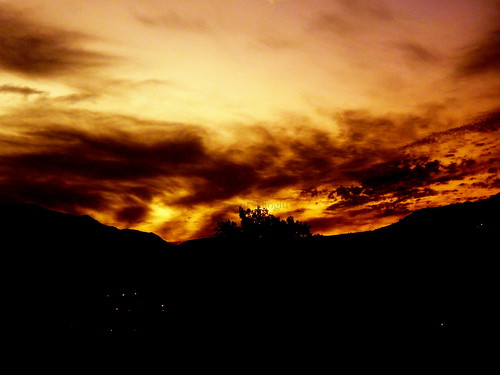Millions of visitors come to Yellowstone each year with one ear cupped for the faintest hint of a wolf howl. Others hope to catch the bugle call of rutting elk. But Chuck Peterson's ears are tuned to something else: a sound "like someone running their thumb across the teeth of a comb," says the Idaho State professor and co-author of Amphibians & Reptiles of Yellowstone and Grand Teton National Parks. It's the call of the boreal chorus frog--a creature at the center of a controversy over science, global warming, and the future of Yellowstone National Park.
Barely the size of your thumb (just 1 to 1 1/2 inches long), the chorus frog seems an unlikely creature to divide the science community. One of only four amphibians in the park, they are, says Peterson, "very attractive frogs"--when you can find them. "They are frustratingly hard to spot," he says. "But the pouches on their necks are yellow and if the light is right, you can see a half dozen or more when they're calling."
Those mating calls begin as early as March in the lower elevations of the park and continue until June or early July at higher elevations. Researchers believe there may be a "chorus master" who initiates the calling-an invitation for others to join--and soon the chorus becomes a din. "You can hear it from a quarter-mile away," says Peterson, "and if you are close, like within a few feet, it can actually hurt your ears."
To Peterson, it is one of Yellowstone's signature sounds that too many visitors miss. But lately, it's like someone turned down the volume.
Therein lies the controversy. A recent paper in the Proceedings of the National Academy of Sciences is sounding what authors Dr. Elizabeth Hadly and Sarah McMenamin see as a clarion call over the loss of park wetlands due to global climate change--and such losses could pose serious threats to Yellowstone's amphibians.
Between 2006 and 2008, McMenamin, a graduate student at Stanford University, haunted the shores of the small ponds speckling the floor of Yellowstone's Lamar Valley to document salamander diversity and the population genetics of amphibians. During the course of the field work, McMenamin compared her data with records from surveys done on the very same ponds in 1992 and 1993. The results, she says, were "startling."
"I began to see an enormous difference in both the number of ponds available and the number of species we were documenting," says McMenamin. Only 38 of the 49 locations contained any water at all. Only 21 were found to contain even one amphibian species. And 17 ponds known to host amphibian species in the early 1990s were apparently devoid of those species.
"It's frightening," says Hadly. "It's like these small ponds are just blinking off." Compared to 16 years ago, the paper states, the number of perpetually dry ponds in northern Yellowstone has quadrupled. Global warming--with its lowered precipitation rates, higher temperatures, and prolonged drought--could be to blame.
The study also claims that of the ponds that remain, the number supporting amphibians has declined significantly. Without ponds, amphibians have no place to breed, lay eggs, or develop--and that could explain why the park's boreal chorus frog population has dropped by a reported 75 percent.
But there's a bigger trend here, too. "Amphibians are an indicator species that could reveal further disturbances reverberating up the food chain in the future," McMenamin says. "Our results indicate that climatic warming already has disrupted one of the best-protected ecosystems on our planet."
Not so fast, says Peterson, the Idaho State professor. In a published response, he and Stephen Corn, a zoologist with the Northern Rocky Mountain Science Center, cite the small geographic area studied (less than 1 percent of the park), problems with sampling size and design, and the short duration of the study, calling any claim of an amphibian demise park-wide "unsupported."
"I'm not saying there isn't a problem here," says Peterson, who has been studying the park's amphibians since 1991. "But amphibian populations have been fluctuating for a long time, and at this point it's just unclear whether we're dealing with year-to-year variation or a long-term trend. More rigorous and careful research is needed."
None of the amphibian species in Yellowstone have been listed as threatened or endangered yet, but the park has established long-term monitoring sites and continues to fund further surveys. And in the middle of it all sits the tiny boreal chorus frog singing loud and clear, revealing secrets that we may need to know, but don't yet know how to hear.
Jeff Rennicke teaches literature at Conserve School in Wisconsin's North Woods
Source Citation
Rennicke, Jeff. "A chorus of controversy: Yellowstone's boreal chorus frogs may be disappearing. Is global warming to blame?" National Parks Summer 2009: 22+. InfoTrac Garden, Landscape & Horticulture eCollection. Web. 24 Mar. 2010.
Document URL
http://find.galegroup.com/gtx/infomark.do?&contentSet=IAC-Documents&type=retrieve&tabID=T003&prodId=SPJ.SP05&docId=A203402975&source=gale&srcprod=SP05&userGroupName=broward29&version=1.0
Gale Document Number:A203402975
 United States Judo Association - USJA
United States Judo Association - USJA 




No comments:
Post a Comment